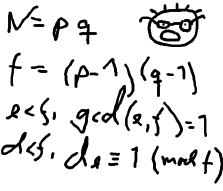- 【JavaSE】GUI编程(图形界面)
lil_侯昊
java开发语言
GUI(GraphicalUserInterface)图形用户界面-àjava提供的图形用户界面UI–用户界面Swing概述Javax.swing包此包中包含了java主要的图形界面的实现类●swing是一个为Java设计的GUI工具包javax.swing,该包中包括了图形用户界面的各种组件支持。●一个Java的图形界面,由各种不同类型的“元素”组成,这些“元素”被称为组件(Component)
- Airflow DAG的调度时间探秘
t0_54coder
编程问题解决手册个人开发
引言在数据工程和ETL(Extract,Transform,Load)流程中,ApacheAirflow是一个非常流行的工作流调度工具。Airflow通过DAG(DirectedAcyclicGraph)来定义任务依赖和调度策略。然而,调度时间的设置有时会让新手甚至经验丰富的用户感到困惑。本文将通过一个实际的案例来探讨Airflow中DAG的调度时间设置,帮助读者理解并解决常见的调度问题。背景介绍
- 证书格式介绍及如何将.pem转换为.crt和.key?
小洋人最happy
Linuxpemcrtcertopenssl
证书格式介绍PKCS全称是Public-KeyCryptographyStandards,是由RSA实验室与其它安全系统开发商为促进公钥密码的发展而制订的一系列标准,PKCS目前共发布过15个标准。常用的有:PKCS#7:CryptographicMessageSyntaxStandardPKCS#10:CertificationRequestStandardPKCS#12:PersonalInf
- neo4j社区版多图部署
梦想成为大佬的王老八
neo4j数据库mysql
neo4j社区版不支持多图谱,可采用多安装文件或容器进行多图部署。(想法倒是很简单,就是有一个小问题浪费了我宝贵的半天时间)单图数据库安装、配置及部署:1.neo4j数据库运行需要JDK,首先要下载配置个JDK,此处不赘述了。2.下载neo4j安装包。链接:Neo4jDeploymentCenter-GraphDatabase&Analytics,注意选择社区版、版本号(文件版本越高,对JDK的版
- python实现有向无环图(DAG)
少年白char
python
摘自dagobah项目dagfromcollectionsimportOrderedDict,defaultdictfromcopyimportcopy,deepcopyclassDAG(object):"""Directedacyclicgraphimplementation."""def__init__(self):"""ConstructanewDAGwithnonodesoredges."
- DeepSeek-r1 与 RAG工作流的无缝结合:应对复杂问题的新方式
deepseekllm
ByDeanSacoranskyandDenizAskin原文标题:推理与递归检索:Deepseek-r1、Tavily和LangGraphDeepSeek-r1的影响DeepSeek在不到一个月前公开发布了r1模型。突然间,每个人都可以访问强大的推理模型,用于应用和模型开发。在这篇文章中,我们提出了一种简单的代理工作流,使DeepSeek-r1能够代理性地执行信息检索!该系统能够准确地回答复杂的
- Redis基础笔记
JustGopher
redis笔记java
一、基础知识连接方式CLI(CommandLineInterface)API(ApplicationProgrammingInterface)GUI(GraphicalUserInterface)启动redis-server连接到Redis(RedisCLIClient)redisredis-clitelnet127.0.0.16379退出quit/exit查看过期时间TTLkey设置过期时间ex
- ZRANGE
那些年的代码
redis
ZRANGEkeystartstop[WITHSCORES]返回有序集key中,指定区间内的成员。其中成员的位置按score值递增(从小到大)来排序。具有相同score值的成员按字典序(lexicographicalorder)来排列。如果你需要成员按score值递减(从大到小)来排列,请使用ZREVRANGE命令。下标参数start和stop都以0为底,也就是说,以0表示有序集第一个成员,以1表
- QT Data Visualization模块(一)
淼淼763
qt6.3c++
1、.pro文件添加模块:QT+=datavisualization2、包含头文件:#include3、Q3DBars、Q3DScatter、Q3DSurface继承QWindow类。QAbstract3DGraph是Qt框架中用于实现三维图形的抽象基类,QAbstract3DGraph提供了一组通用的方法和属性。4、每一种三维图形类对应一种三维序列(在图像处理和计算机图形学中,"图形序列"是指一
- Flink 源码笔记03—StreamGraph到JobGraph
董嘻嘻
Flink源码笔记flinkjavabigdata
文章目录简介入口函数traverseStreamGraphAndGenerateHashesgenerateDeterministicHashgenerateUserSpecifiedHashsetChainingisChainable简介JobGraph可以认为是StreamGraph的优化图,它将一些符合特定条件的operators合并成一个operatorchain,以减少数据在节点之间序列
- 十四、Flink源码阅读--JobGraph生成过程
灰二和杉菜
ApacheFlinkFlinkJobGraph生成源码分析
上篇分析了client整个提交任务过程,最终提交的是一个JobGraph对象,那么是如何从jar或sql任务转为JobGraph的呢,这篇我们仔细研究一下,版本为1.6.3源码分析上篇我们介绍client端提交任务最终会到到ClusterClient.run()方法,就在这个方法中封装了JobGraph的步骤。publicJobSubmissionResultrun(FlinkPlancompil
- qt 图形视图框架详解以及举例
爱学习的大牛123
qt开发qt数据库开发语言
1基础介绍Qt的图形视图框架是一个强大的工具,用于创建和管理大量的2D图形项目。它由三个主要类组成:QGraphicsScene、QGraphicsView和QGraphicsItem。下面我将详细解释这个框架,并提供一些示例代码。1.框架组成a)QGraphicsScene(场景):-用于管理大量的2D图形项目-提供了一个高效的接口来添加、删除和查找项目b)QGraphicsView(视图):-
- 大规模GPU集群的进阶之路
卢旗
人工智能
大家好,我是卢旗。今天来聊聊GPU。GPU,全称GraphicProcessingUnit,即图形处理器。它的并行处理能力非常强大,能够同时处理多个任务和数据,因此被广泛用于图形渲染、视频处理、深度学习、科学计算等领域。研发团队在负责制定硬件选型策略并设计优化下一代大规模GPU集群的软硬件架构时,我们需要关注GPU技术的最新进展、重点研究问题以及潜在的技术突破。一、GPU在重点研究的问题算力提升与
- 商汤绝影端到端自动驾驶的迭代优化
AGI大模型与大数据研究院
计算机软件编程原理与应用实践javapythonjavascriptkotlingolang架构人工智能
自动驾驶,端到端,迭代优化,深度学习,感知,规划,控制,模型训练,数据增强,模型微调1.背景介绍随着人工智能和计算机视觉技术的飞速发展,自动驾驶汽车从科幻走进了现实。商汤科技推出的绝影端到端自动驾驶系统,就是其中的佼佼者。本文将深入剖析商汤绝影端到端自动驾驶系统的迭代优化过程,帮助读者理解其背后的技术原理和架构设计。2.核心概念与联系商汤绝影端到端自动驾驶系统的核心架构如下:graphLRA[感知
- iOS 中使用 FFmpeg 的高级功能 - 滤镜(Filters)
陈皮话梅糖@
FFmpeg音视频高阶技术讲解iosffmpeg
FFmpeg提供了强大的滤镜功能,可以对音视频进行各种处理,例如裁剪、缩放、添加水印、调整颜色、添加特效等。1.FFmpeg滤镜基础知识1.1什么是滤镜(Filters)?滤镜是FFmpeg提供的一种功能,用于对音视频流进行处理。滤镜链(FilterChain)是多个滤镜的组合,按顺序对输入流进行处理。滤镜图(FilterGraph)是一个复杂的滤镜链,可以包含多个输入和输出。1.2常见的滤镜滤镜
- NoSQL数据库介绍与分类
码农老起
nosql数据库
目录一.NoSQL数据库的定义及其特点二.NoSQL的四种主要类型2.1文档型数据库(Document-BasedDatabase)2.2键值型数据库(Key-ValueStore)2.3列族型数据库(Column-FamilyStore)2.4图数据库(GraphDatabase)三.主要的NoSQL数据库3.1MongoDB3.2Redis3.3Cassandra3.4Neo4j四.使用NoS
- geojson 导入mysql_导入GeoJSON数据到SQL Server数据库中
冠位咕哒子
geojson导入mysql
导入GeoJSON数据到SQLServer数据库中GeoJSON是GIS行业里一种常见的数据交换格式,能够存储结构化的空间地理信息。因为SQLServer从2008版开始提供了空间数据类型geometry与geography的支持,所以我也试着将项目中用到的地图数据转换到数据库中,方便之后的调用。因为中途遇到了不少坑,所以写了这篇文章作为备忘。事前准备:了解GeoJSON与SQLServer的空间
- qwidget添加阴影效果
Sleepless_斑马
QTqt
QGraphicsDropShadowEffect*shadow_effect=newQGraphicsDropShadowEffect(this);shadow_effect->setOffset(0,0);shadow_effect->setColor(QColor(43,43,43));shadow_effect->setBlurRadius(8);ui->label->setGraphic
- POI按行读取word,并去掉属性标签内容:超链接
weixin_30535043
publicStringreadDoc(Filefile){StringBufferbuffer=newStringBuffer();InputStreaminput=null;WordExtractorextractor=null;String[]paragraphs=null;try{input=newFileInputStream(file);extractor=newWordExtract
- 图的存储结构:邻接矩阵和邻接表
Lee Neo
#数据结构数据结构
图graph顶点vertex弧arc弧尾tail弧头head有向图digraph边edge无向图undigraph权weight网network邻接点adjacent依附incident度degree出度OutDegree入度Indegree路径path邻接矩阵adjacencymatrix一、邻接矩阵存储(数组表示)借助矩阵(二维数组)表示元素(图的任意两个顶点)之间的关系用一维数组(顶点表)存
- 深度优先搜索DFS
顾北辰20
Java数据结构算法数据结构java
目录类`GraphDFS`的定义深度优先搜索方法`dfs`访问顺序的获取`order`深度优先搜索(DFS,Depth-FirstSearch)算法。深度优先搜索是一种用于遍历或搜索树或图的算法,其特点是从某个起始顶点出发,首先访问这个顶点,然后递归地访问与这个顶点直接相连的一个未访问过的顶点,再从这个顶点出发,继续访问它的未访问过的邻接顶点,如此重复,直到不能再深入为止,再回溯,直到所有能到达的
- 知识图谱大模型系列之 11什么是 Neo4j LLM 知识图谱构建器?
知识大胖
NVIDIAGPU和大语言模型开发教程知识图谱neo4j人工智能llm
简介LLM知识图谱构建器是Neo4j的GraphRAG生态系统工具之一,可让您将非结构化数据转换为动态知识图谱。它与检索增强生成(RAG)聊天机器人集成,可实现自然语言查询和对数据的可解释洞察。推荐文章《使用ChatGPT从视频脚本创建知识图谱,使用GPT-4作为领域专家来帮助您从视频转录中提取知识(教程含完整源码)》权重2,知识图谱类《赋能知识图谱形成:利用BERTopic、DataMapPlo
- 构建知识图谱之二(知识图谱构建技术)
tomlone
知识谱图知识图谱人工智能
ArchitectureofKnowledgeGraphConstructionTechniques知识图谱构建技术论文链接:https://acadpubl.eu/jsi/2018-118-19/articles/19b/24.pdf1.为什么我们需要构建知识图谱?构建知识图谱对于保险行业的意义在于它能够将分散的、复杂的行业数据连接起来,促进智能化决策、增强风险控制能力、提高效率并优化客户体验。
- LangChain开发【NL2SQL】应用(few-shot优化)
向羿燃
LangChain开发及生态langchainai人工智能数据分析
前言之前发布的博客LangGraph开发Agent智能体应用【NL2SQL】-CSDN博客,留了一个问题,对于相对复杂的sql(leetcode中等难度的sql题),gpt4o就力不从心了。这篇文章来讲一下优化什么是few-shot使用这些少量的、调整后的样本对预训练模型进行微调其实就是给LLM少量示例关于few-shot的研究:https://medium.com/ubiai-nlp/step-
- ✨《微前端落地实战:qiankun从入门到精通!3小时搞定Vue+React多应用架构》
庸俗今天不摸鱼
前端vue.jsreact.js学习前端框架
微前端落地实践指南(qiankun框架)微前端核心架构图graphTDA[主应用]-->B[vue子应用]A-->C[react子应用]A-->D[angular子应用]B-->E{通信机制}C-->ED-->E主应用配置详解1.主应用注册流程//main.jsimport{registerMicroApps,start}from'qiankun';constapps=[{name:'vueApp
- 《Python全栈开发:构建高并发物联网数据中台实战》
放氮气的蜗牛
深度博客python物联网开发语言
一、项目概述本文将基于Python生态构建一个完整的物联网数据中台系统,实现从设备接入到商业智能的全链路开发。系统采用微服务架构,核心功能包括:百万级设备并发接入(基于MQTT协议)实时流数据处理(ApacheKafka+Faust)时序数据存储(InfluxDB+Redis)智能告警引擎(规则引擎+机器学习)三维可视化大屏(PyWeb3D+ECharts)graphTDA[设备端]-->|MQT
- stata软件不出图_[求助]stata8画图总是画不出来,不知道为什么?请指点
weixin_39911998
stata软件不出图
+-------------+|x1x2||-------------|1.|2.61.67|2.|3.241.98|3.|3.731.98|4.|4.322.34|5.|4.732.5||-------------|6.|5.183.6|7.|5.583.73|8.|5.784.14|9.|6.44.17|10.|6.534.57|+-------------+graphx1x2(note:sc
- 【Python深入浅出㊸】解锁Python3中的TensorFlow:开启深度学习之旅
奔跑吧邓邓子
Python深入浅出python深度学习tensorflow
目录一、TensorFlow简介1.1定义与背景1.2特点二、Python3与TensorFlow的关系2.1版本对应2.2为何选择Python3三、安装TensorFlow3.1安装步骤3.2验证安装四、TensorFlow基本概念与使用方法4.1计算图(Graph)4.2会话(Session)4.3张量(Tensor)4.4变量(Variable)4.5占位符(Placeholder)五、Te
- Android新版高斯模糊(毛玻璃)官方实现,Kotlin
zhangphil
Androidkotlinandroidkotlin
Android新版高斯模糊(毛玻璃)官方实现,Kotlin从Android12开始,Android官方API支持高斯模糊(毛玻璃)效果。关键是通过RenderEffect实现。https://developer.android.com/reference/android/graphics/RenderEffecthttps://developer.android.com/reference/and
- 医学影像中缩写如CR、DR、DX、CT医疗术语意义
wangnaisheng
DICOMdicom
医疗术语解释:DigitalRadiography(CR,DX):数字X线摄影Mammography(MG):乳房X射线照相术ComputedTomography(CT):计算机断层扫描MagneticResonance(MR):磁共振PositronEmissionTomographyPET-CT(PT):正电子发射计算机断层扫描PET-CTUltrasonography(US,IVUS):超声
- [黑洞与暗粒子]没有光的世界
comsci
无论是相对论还是其它现代物理学,都显然有个缺陷,那就是必须有光才能够计算
但是,我相信,在我们的世界和宇宙平面中,肯定存在没有光的世界....
那么,在没有光的世界,光子和其它粒子的规律无法被应用和考察,那么以光速为核心的
&nbs
- jQuery Lazy Load 图片延迟加载
aijuans
jquery
基于 jQuery 的图片延迟加载插件,在用户滚动页面到图片之后才进行加载。
对于有较多的图片的网页,使用图片延迟加载,能有效的提高页面加载速度。
版本:
jQuery v1.4.4+
jQuery Lazy Load v1.7.2
注意事项:
需要真正实现图片延迟加载,必须将真实图片地址写在 data-original 属性中。若 src
- 使用Jodd的优点
Kai_Ge
jodd
1. 简化和统一 controller ,抛弃 extends SimpleFormController ,统一使用 implements Controller 的方式。
2. 简化 JSP 页面的 bind, 不需要一个字段一个字段的绑定。
3. 对 bean 没有任何要求,可以使用任意的 bean 做为 formBean。
使用方法简介
- jpa Query转hibernate Query
120153216
Hibernate
public List<Map> getMapList(String hql,
Map map) {
org.hibernate.Query jpaQuery = entityManager.createQuery(hql);
if (null != map) {
for (String parameter : map.keySet()) {
jp
- Django_Python3添加MySQL/MariaDB支持
2002wmj
mariaDB
现状
首先,
[email protected] 中默认的引擎为 django.db.backends.mysql 。但是在Python3中如果这样写的话,会发现 django.db.backends.mysql 依赖 MySQLdb[5] ,而 MySQLdb 又不兼容 Python3 于是要找一种新的方式来继续使用MySQL。 MySQL官方的方案
首先据MySQL文档[3]说,自从MySQL
- 在SQLSERVER中查找消耗IO最多的SQL
357029540
SQL Server
返回做IO数目最多的50条语句以及它们的执行计划。
select top 50
(total_logical_reads/execution_count) as avg_logical_reads,
(total_logical_writes/execution_count) as avg_logical_writes,
(tot
- spring UnChecked 异常 官方定义!
7454103
spring
如果你接触过spring的 事物管理!那么你必须明白 spring的 非捕获异常! 即 unchecked 异常! 因为 spring 默认这类异常事物自动回滚!!
public static boolean isCheckedException(Throwable ex)
{
return !(ex instanceof RuntimeExcep
- mongoDB 入门指南、示例
adminjun
javamongodb操作
一、准备工作
1、 下载mongoDB
下载地址:http://www.mongodb.org/downloads
选择合适你的版本
相关文档:http://www.mongodb.org/display/DOCS/Tutorial
2、 安装mongoDB
A、 不解压模式:
将下载下来的mongoDB-xxx.zip打开,找到bin目录,运行mongod.exe就可以启动服务,默
- CUDA 5 Release Candidate Now Available
aijuans
CUDA
The CUDA 5 Release Candidate is now available at http://developer.nvidia.com/<wbr></wbr>cuda/cuda-pre-production. Now applicable to a broader set of algorithms, CUDA 5 has advanced fe
- Essential Studio for WinRT网格控件测评
Axiba
JavaScripthtml5
Essential Studio for WinRT界面控件包含了商业平板应用程序开发中所需的所有控件,如市场上运行速度最快的grid 和chart、地图、RDL报表查看器、丰富的文本查看器及图表等等。同时,该控件还包含了一组独特的库,用于从WinRT应用程序中生成Excel、Word以及PDF格式的文件。此文将对其另外一个强大的控件——网格控件进行专门的测评详述。
网格控件功能
1、
- java 获取windows系统安装的证书或证书链
bewithme
windows
有时需要获取windows系统安装的证书或证书链,比如说你要通过证书来创建java的密钥库 。
有关证书链的解释可以查看此处 。
public static void main(String[] args) {
SunMSCAPI providerMSCAPI = new SunMSCAPI();
S
- NoSQL数据库之Redis数据库管理(set类型和zset类型)
bijian1013
redis数据库NoSQL
4.sets类型
Set是集合,它是string类型的无序集合。set是通过hash table实现的,添加、删除和查找的复杂度都是O(1)。对集合我们可以取并集、交集、差集。通过这些操作我们可以实现sns中的好友推荐和blog的tag功能。
sadd:向名称为key的set中添加元
- 异常捕获何时用Exception,何时用Throwable
bingyingao
用Exception的情况
try {
//可能发生空指针、数组溢出等异常
} catch (Exception e) {
- 【Kafka四】Kakfa伪分布式安装
bit1129
kafka
在http://bit1129.iteye.com/blog/2174791一文中,实现了单Kafka服务器的安装,在Kafka中,每个Kafka服务器称为一个broker。本文简单介绍下,在单机环境下Kafka的伪分布式安装和测试验证 1. 安装步骤
Kafka伪分布式安装的思路跟Zookeeper的伪分布式安装思路完全一样,不过比Zookeeper稍微简单些(不
- Project Euler
bookjovi
haskell
Project Euler是个数学问题求解网站,网站设计的很有意思,有很多problem,在未提交正确答案前不能查看problem的overview,也不能查看关于problem的discussion thread,只能看到现在problem已经被多少人解决了,人数越多往往代表问题越容易。
看看problem 1吧:
Add all the natural num
- Java-Collections Framework学习与总结-ArrayDeque
BrokenDreams
Collections
表、栈和队列是三种基本的数据结构,前面总结的ArrayList和LinkedList可以作为任意一种数据结构来使用,当然由于实现方式的不同,操作的效率也会不同。
这篇要看一下java.util.ArrayDeque。从命名上看
- 读《研磨设计模式》-代码笔记-装饰模式-Decorator
bylijinnan
java设计模式
声明: 本文只为方便我个人查阅和理解,详细的分析以及源代码请移步 原作者的博客http://chjavach.iteye.com/
import java.io.BufferedOutputStream;
import java.io.DataOutputStream;
import java.io.FileOutputStream;
import java.io.Fi
- Maven学习(一)
chenyu19891124
Maven私服
学习一门技术和工具总得花费一段时间,5月底6月初自己学习了一些工具,maven+Hudson+nexus的搭建,对于maven以前只是听说,顺便再自己的电脑上搭建了一个maven环境,但是完全不了解maven这一强大的构建工具,还有ant也是一个构建工具,但ant就没有maven那么的简单方便,其实简单点说maven是一个运用命令行就能完成构建,测试,打包,发布一系列功
- [原创]JWFD工作流引擎设计----节点匹配搜索算法(用于初步解决条件异步汇聚问题) 补充
comsci
算法工作PHP搜索引擎嵌入式
本文主要介绍在JWFD工作流引擎设计中遇到的一个实际问题的解决方案,请参考我的博文"带条件选择的并行汇聚路由问题"中图例A2描述的情况(http://comsci.iteye.com/blog/339756),我现在把我对图例A2的一个解决方案公布出来,请大家多指点
节点匹配搜索算法(用于解决标准对称流程图条件汇聚点运行控制参数的算法)
需要解决的问题:已知分支
- Linux中用shell获取昨天、明天或多天前的日期
daizj
linuxshell上几年昨天获取上几个月
在Linux中可以通过date命令获取昨天、明天、上个月、下个月、上一年和下一年
# 获取昨天
date -d 'yesterday' # 或 date -d 'last day'
# 获取明天
date -d 'tomorrow' # 或 date -d 'next day'
# 获取上个月
date -d 'last month'
#
- 我所理解的云计算
dongwei_6688
云计算
在刚开始接触到一个概念时,人们往往都会去探寻这个概念的含义,以达到对其有一个感性的认知,在Wikipedia上关于“云计算”是这么定义的,它说:
Cloud computing is a phrase used to describe a variety of computing co
- YII CMenu配置
dcj3sjt126com
yii
Adding id and class names to CMenu
We use the id and htmlOptions to accomplish this. Watch.
//in your view
$this->widget('zii.widgets.CMenu', array(
'id'=>'myMenu',
'items'=>$this-&g
- 设计模式之静态代理与动态代理
come_for_dream
设计模式
静态代理与动态代理
代理模式是java开发中用到的相对比较多的设计模式,其中的思想就是主业务和相关业务分离。所谓的代理设计就是指由一个代理主题来操作真实主题,真实主题执行具体的业务操作,而代理主题负责其他相关业务的处理。比如我们在进行删除操作的时候需要检验一下用户是否登陆,我们可以删除看成主业务,而把检验用户是否登陆看成其相关业务
- 【转】理解Javascript 系列
gcc2ge
JavaScript
理解Javascript_13_执行模型详解
摘要: 在《理解Javascript_12_执行模型浅析》一文中,我们初步的了解了执行上下文与作用域的概念,那么这一篇将深入分析执行上下文的构建过程,了解执行上下文、函数对象、作用域三者之间的关系。函数执行环境简单的代码:当调用say方法时,第一步是创建其执行环境,在创建执行环境的过程中,会按照定义的先后顺序完成一系列操作:1.首先会创建一个
- Subsets II
hcx2013
set
Given a collection of integers that might contain duplicates, nums, return all possible subsets.
Note:
Elements in a subset must be in non-descending order.
The solution set must not conta
- Spring4.1新特性——Spring缓存框架增强
jinnianshilongnian
spring4
目录
Spring4.1新特性——综述
Spring4.1新特性——Spring核心部分及其他
Spring4.1新特性——Spring缓存框架增强
Spring4.1新特性——异步调用和事件机制的异常处理
Spring4.1新特性——数据库集成测试脚本初始化
Spring4.1新特性——Spring MVC增强
Spring4.1新特性——页面自动化测试框架Spring MVC T
- shell嵌套expect执行命令
liyonghui160com
一直都想把expect的操作写到bash脚本里,这样就不用我再写两个脚本来执行了,搞了一下午终于有点小成就,给大家看看吧.
系统:centos 5.x
1.先安装expect
yum -y install expect
2.脚本内容:
cat auto_svn.sh
#!/bin/bash
- Linux实用命令整理
pda158
linux
0. 基本命令 linux 基本命令整理
1. 压缩 解压 tar -zcvf a.tar.gz a #把a压缩成a.tar.gz tar -zxvf a.tar.gz #把a.tar.gz解压成a
2. vim小结 2.1 vim替换 :m,ns/word_1/word_2/gc
- 独立开发人员通向成功的29个小贴士
shoothao
独立开发
概述:本文收集了关于独立开发人员通向成功需要注意的一些东西,对于具体的每个贴士的注解有兴趣的朋友可以查看下面标注的原文地址。
明白你从事独立开发的原因和目的。
保持坚持制定计划的好习惯。
万事开头难,第一份订单是关键。
培养多元化业务技能。
提供卓越的服务和品质。
谨小慎微。
营销是必备技能。
学会组织,有条理的工作才是最有效率的。
“独立
- JAVA中堆栈和内存分配原理
uule
java
1、栈、堆
1.寄存器:最快的存储区, 由编译器根据需求进行分配,我们在程序中无法控制.2. 栈:存放基本类型的变量数据和对象的引用,但对象本身不存放在栈中,而是存放在堆(new 出来的对象)或者常量池中(字符串常量对象存放在常量池中。)3. 堆:存放所有new出来的对象。4. 静态域:存放静态成员(static定义的)5. 常量池:存放字符串常量和基本类型常量(public static f
 The young and very promising cryptographer Odd Even has implemented the security module of a large system with thousands of users, which is now in use in his company. The cryptographic keys are created from the product of two primes, and are believed to be secure because there is no known method for factoring such a product effectively.
The young and very promising cryptographer Odd Even has implemented the security module of a large system with thousands of users, which is now in use in his company. The cryptographic keys are created from the product of two primes, and are believed to be secure because there is no known method for factoring such a product effectively.

